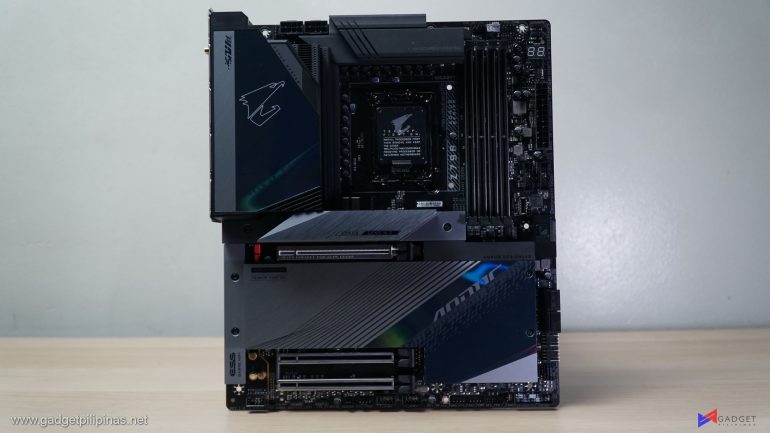Intel 13th Generation has been released and that means a new selection of motherboards to accommodate the all-new Intel Raptor Lake processors. In our Intel Core i9 13900K review, we used the Gigabyte Z790 Aorus Master and pitted the combination against last generation’s Core i9 12900K and AMD’s current flagship the Ryzen 9 7950X. As we are done reviewing the CPUs, let’s now dive into the backbone that enables these processors to perform at their best, the motherboard. Let’s start with the Gigabyte Z790 Aorus Master.
Intel Z790 Chipset
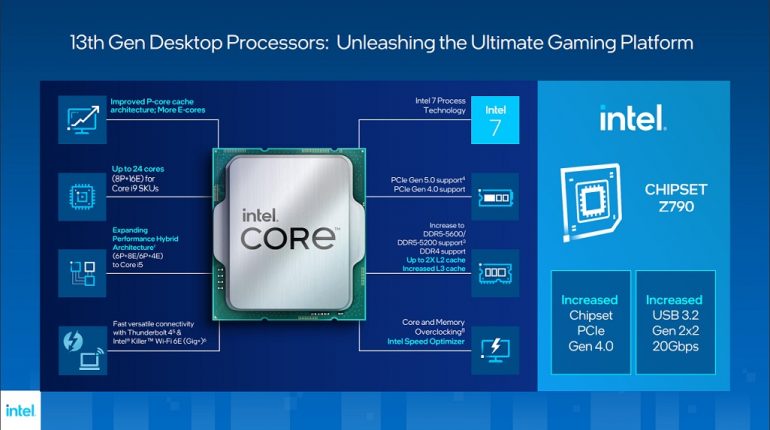
Alongside the new 13th-Gen Desktop Processors comes a new Z790 series chipset motherboard to take advantage of the improved features. Z790 chipset motherboards support both 12th Gen and 13th Gen Core series processors. The new Z790 chipset has increased bandwidth now with up to 20 PCIe 4.0 lanes, 8 PCIe 3.0 lanes, and 5 USB 3.2 Gen 2×2 ports as well as Intel Killer WiFi 6E.
Gigabyte Z790 Aorus Master Specs
| Socket | LGA1700 |
| Chipset | Z790 |
| Form Factor | E-ATX |
| Voltage Regulator | 23 Phase (20x 105A SPS MOSFETs for Vcore) |
| Video Ports | (1) DisplayPort (v1.2) |
| USB Ports | (2) USB 3.2 Gen 2×2 Type-C (20 Gbps) |
| (7) USB 3.2 Gen 2 (10 Gbps) | |
| (1) USB 3.2 Gen 1 Type-C (5 Gbps) | |
| (4) USB 3.2 Gen 1 (5 Gbps) | |
| Network Jacks | (1) 10 GbE |
| Audio Jacks | (2) Analog + SPDIF |
| Legacy Ports/Jacks | ✗ |
| Other Ports/Jack | ✗ |
| PCIe x16 | (1) v5.0 (x16, x8 w/device in M2C-CPU socket) |
| (2) 3.0 (x4, x1) | |
| PCIe x8 | ✗ |
| PCIe x4 | ✗ |
| PCIe x1 | ✗ |
| CrossFire/SLI | AMD CrossFire |
| DIMM Slots | (4) DDR5 8000+(OC), 128GB Capacity |
| M.2 Sockets | (1) PCIe 5.0 x4 (128 Gbps) / PCIe (up to 80mm) |
| (1) PCIe 4.0 x4 (64 Gbps) / PCIe (up to 80mm) | |
| (1) PCIe 4.0 x4 (64 Gbps) / PCIe (up to 110mm) | |
| (1) PCIe 4.0 x4 (64 Gbps) / PCIe (up to 80mm) | |
| (1) PCIe 4.0 x4 (64 Gbps) / PCIe + SATA (up to 110mm) | |
| Supports RAID 0/1/5/10 | |
| U.2 Ports | ✗ |
| SATA Ports | (4) SATA3 6 Gbps (Supports RAID 0/1/5/10) |
| USB Headers | (1) USB v3.2 Gen 2×2, Type-C (20 Gbps) |
| (2) USB v3.2 Gen 1 (5 Gbps) | |
| (2) USB v2.0 (480 Mbps) | |
| Fan/Pump Headers | (10) 4-Pin (CPU, Water cooling CPU, System, System/Water) |
| RGB Headers | (2) aRGB (3-pin) |
| (2) RGB (4-pin) | |
| Diagnostics Panel | (1) Debug LED |
| (1) POST LEDs | |
| Internal Button/Switch | Power and Reset buttons |
| SATA Controllers | ✗ |
| Ethernet Controller(s) | (1) Killer E3100G (2.5 GbE) |
| Wi-Fi / Bluetooth | Killer AX1690 Wi-Fi 6E (2×2 ax, MU-MIMO, 2.4/5/6 GHz, 160 MHz, BT 5.3) |
| USB Controllers | (2 each) RealtekRTS5487, RTS5411 |
| HD Audio Codec | Realtek ALC1220-VB (ESS ES9118 SABRE DAC) |
| DDL/DTS | ✗ / DTS:X Ultra |
| Warranty | 3 Years |
Gigabyte Z790 Aorus Master Unboxing and First Impressions
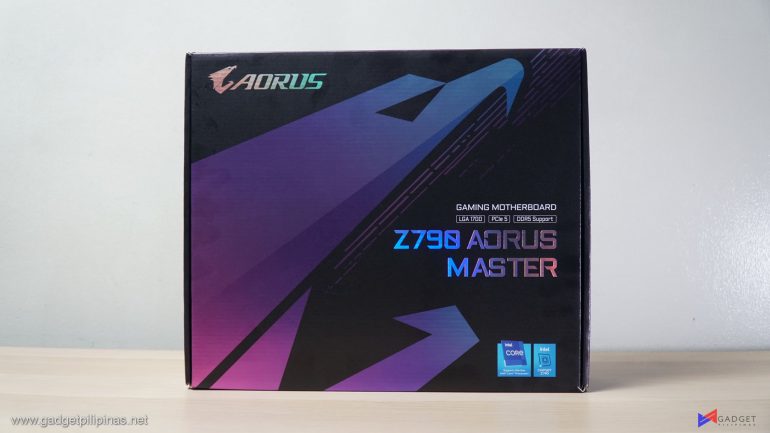
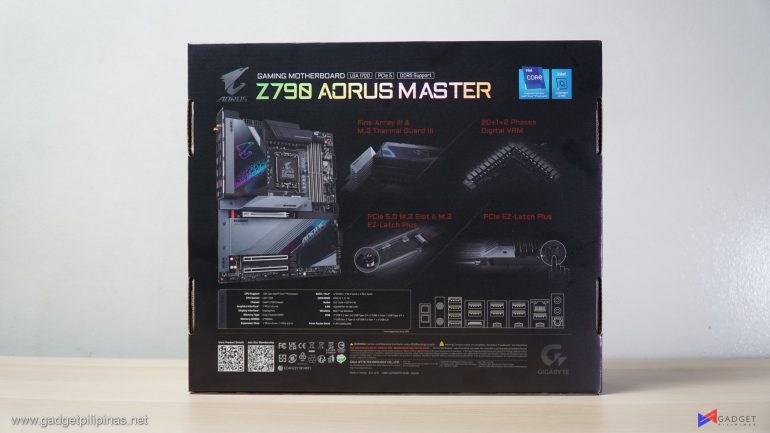
Intel 13th Generation Raptor Lake processors use the same LGA 1700 socket making this generation a refresh for the socket. That said, we have almost no changes to the packaging in the Gigabyte Z790 Aorus Master except for the 13th Gen and Z790 branding on the front.
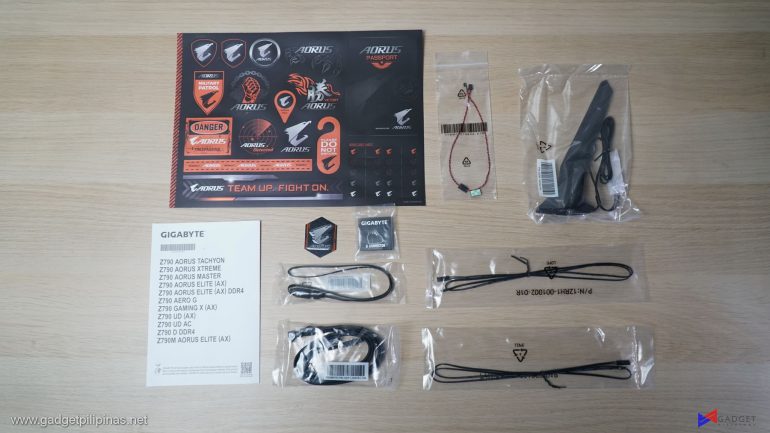
Gigabyte includes the following packaging contents on the Z790 Aorus Master:
- Sticker Pack
- Gigabyte Z790 Manual
- 2x SATA Cables
- 2X Thermal Probe
- Aorus Case Badge
- Aorus G Connector
- WIFI 6E Antenna
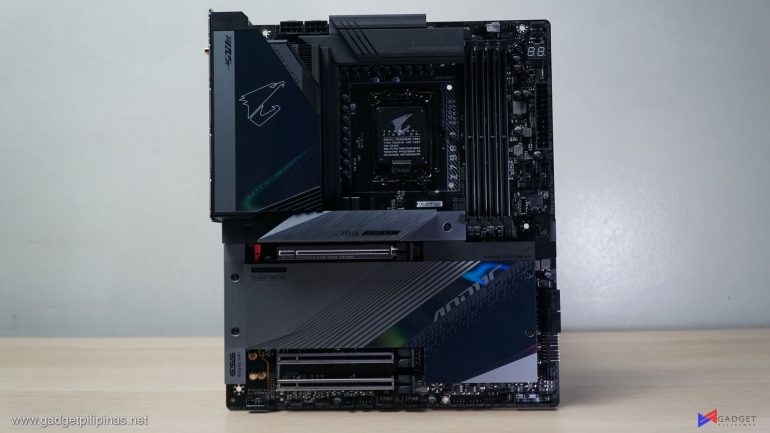
The Gigabyte Z790 Aorus Master has a minimalist look with a black and gunmetal design accented by reflective finishes on the left VRM heatsink and chipset heatsink.
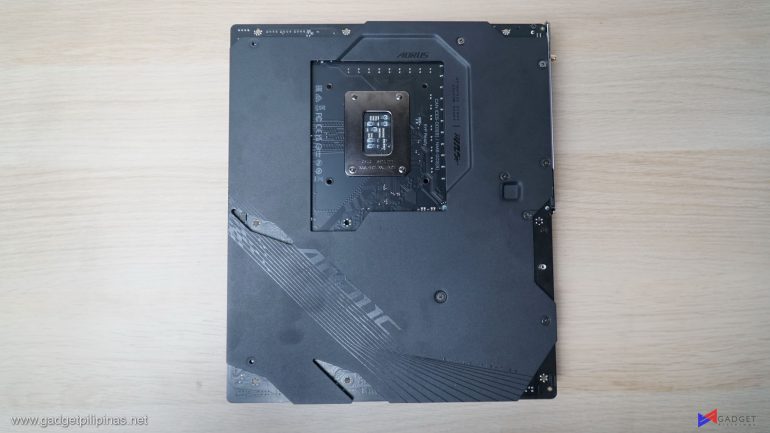
Being a top-of-the-line motherboard, the Gigabyte Z790 Aorus Master is fully armored which extends to the back of the motherboard. The armor protects the motherboard and any surface it’s on from scratches due to the solder points.
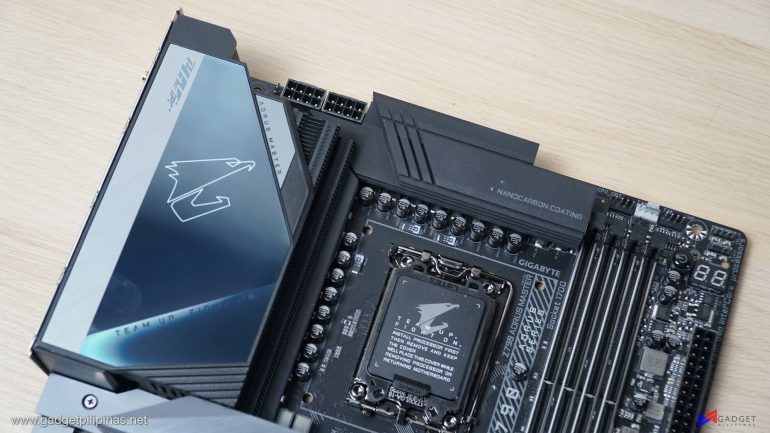
Gigabyte Z790 motherboards use a Direct Digital VRM Design with tantalum polymer capacitors to ensure maximum turbo boost and overclocking performance of the latest Intel 13th Generation Processors. This results in thirty percent fewer voltage spikes compared to a parallel VRM design.
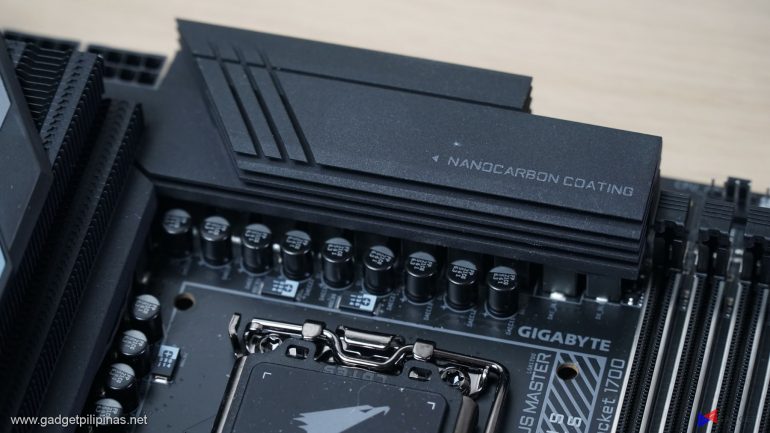
The VRM configuration on the Gigabyte Z790 Aorus Master is robust with 23 Phase 105A SPS MOSFETS, 20 of which are dedicated to the Vcore.
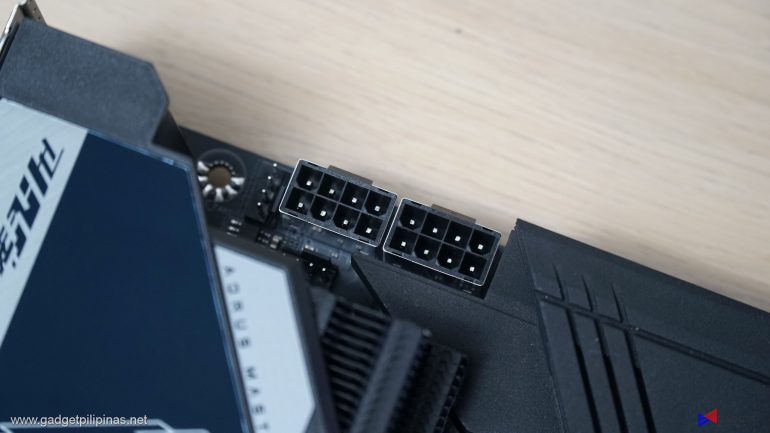
Like the previous generation, the Gigabyte Z790 Aorus Master uses Solid Pin Power connectors for its two 8-pin EPS 12V connector for stable and reliable power delivery supply to the CPU even when overclocking.
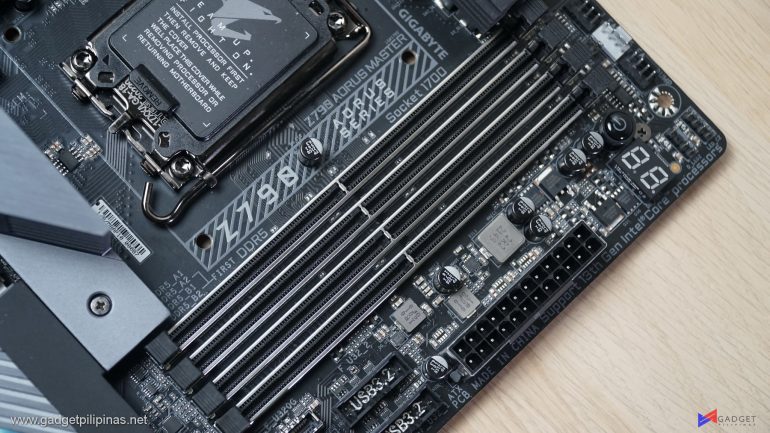
Being a flagship board, the Z790 Aorus Master supports DDR5 memory with speeds of up to DDR5-8000+ making it future-ready for higher speed and tighter timing memory kits. The memory slots is armored with Gigabyte’s exclusive stainless steel shielding design which reduces bending and supports plugging and unplugging up to 5000+ times. The design also contributes in performance as it reduces signal degradation with up to 2.1x better signal stability and overclocking potential compared to DIP DDR4.
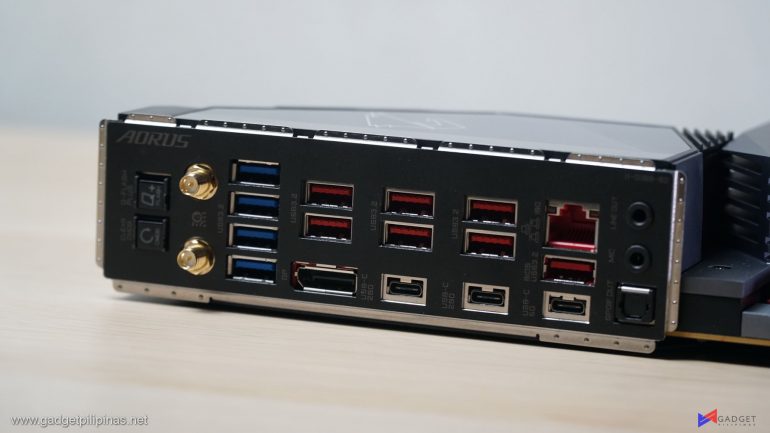
The only thing that stopped Gigabyte from adding more IO on the motherboard is the limited space of the IO panel as the Gigabyte Z790 Aorus Master has the most number of rear IO ports in a motherboard that we’ve reviewed so far. And it’s not just about quantity but about quality as well as you have four USB 3.2 Gen 1 Type-A ports, seven USB 3.2 Gen 2 Type-A ports, two USB 3.2 Gen 2×2 Type-C ports, and one USB 3.2 Gen 1 Type-C port. Of course, you also have the standard 10GbE port, Display Port 1.2, and two audio jacks + SPDIF.
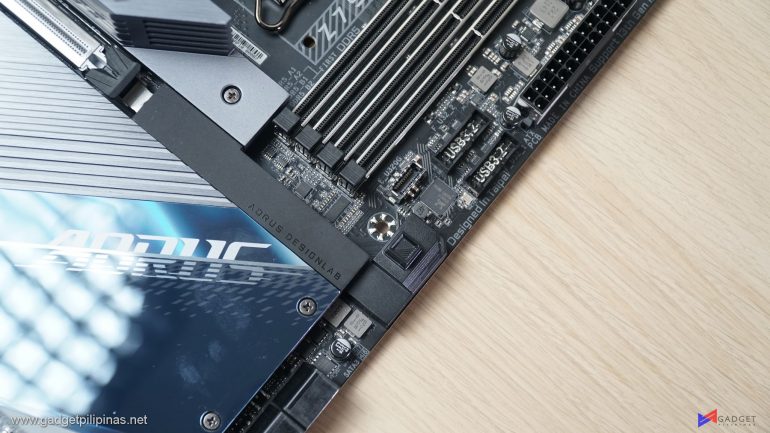
Gigabyte implemented a GPU-release feature similar to ASUS’ Q-Release called the PCIe EZ-Latch Plus. Given the outrageous form factor of the RTX 40 series, having this feature is a godsent as you won’t have to go through the hassle of sneaking your finger to release the lock. Unlike ASUS’ implementation, the button is stealthily designed as blends with the overall motherboard design.
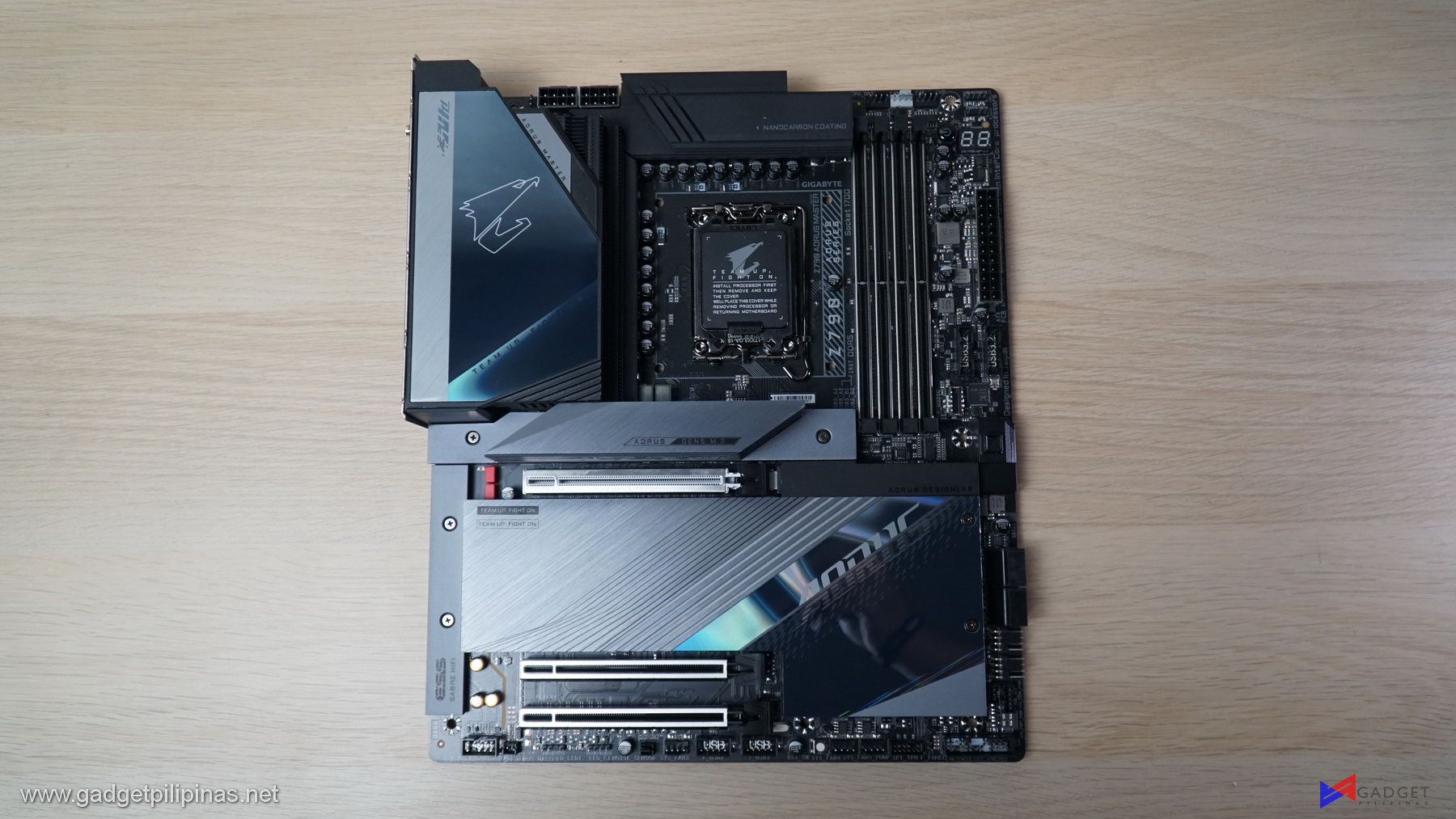
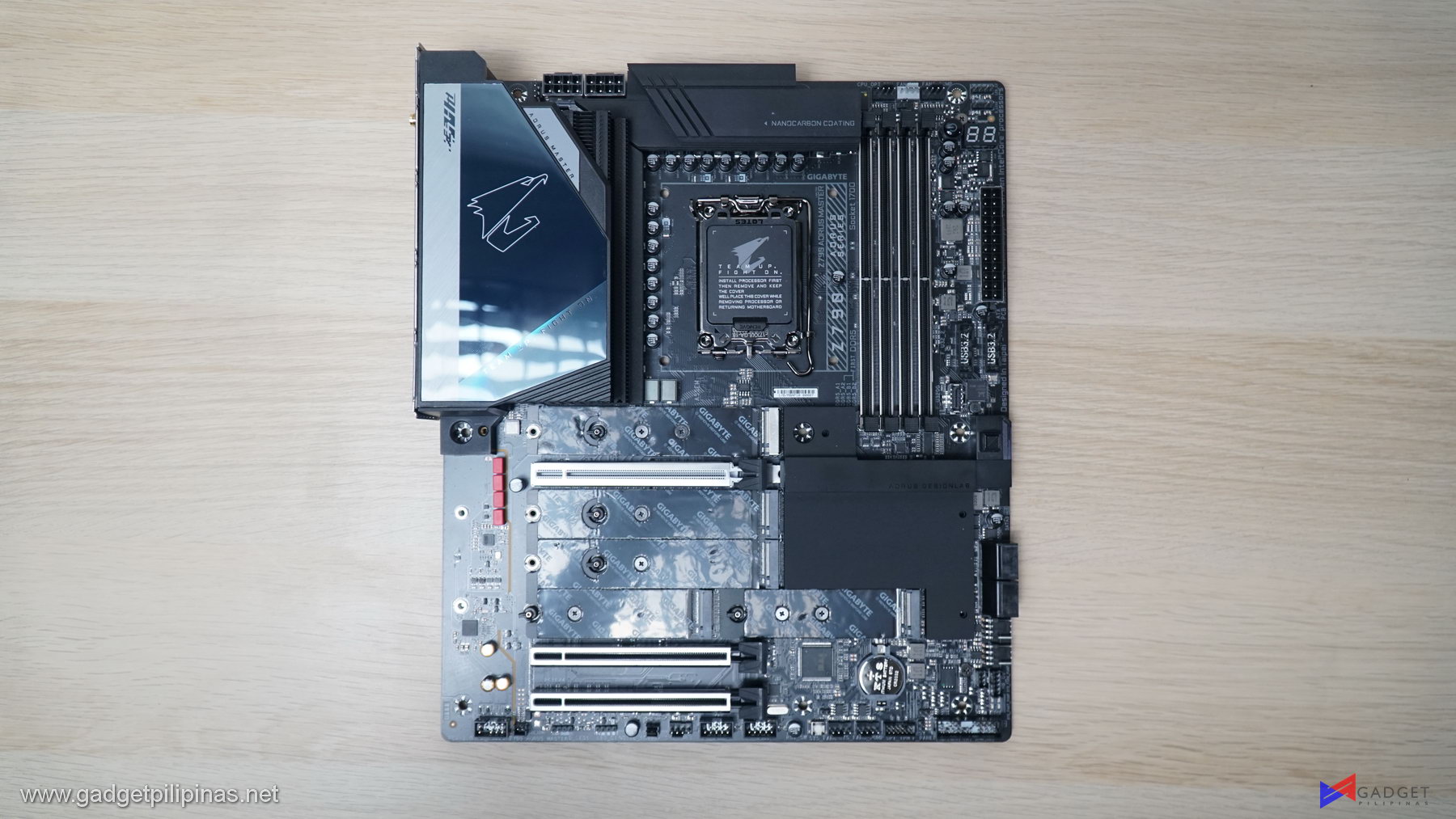
Gigabyte went for a whole solid thermal guard design as opposed to the last generations’ individual slot design. This is a double-edge move as you need to uninstall the graphics card and unscrew more screws to access the M.2 slots in favor of having more cooling surface area.
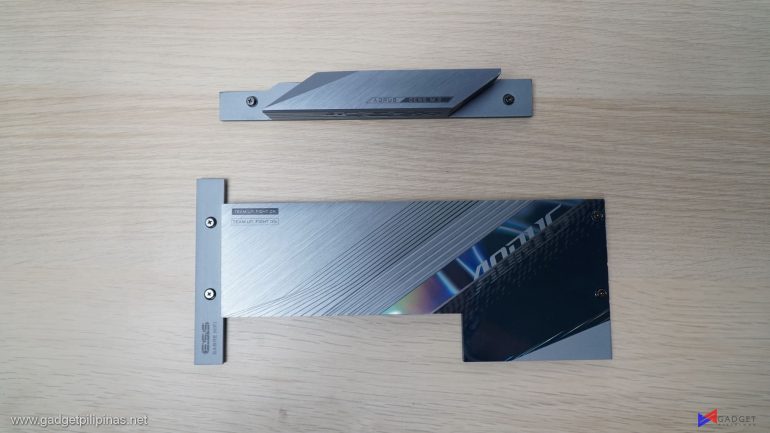
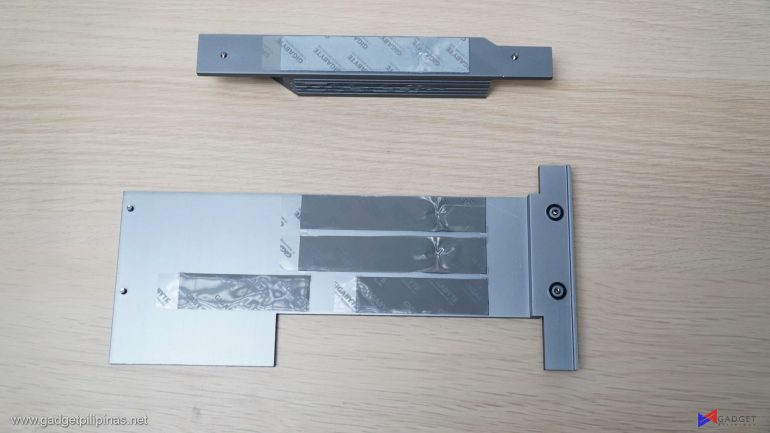
While some may argue this move is a cost-cutting measure, Gigabyte clearly didn’t skimp out on the material with the thick Thermal Guard heatsink that’s able to cool up to four NVMe SSDs.
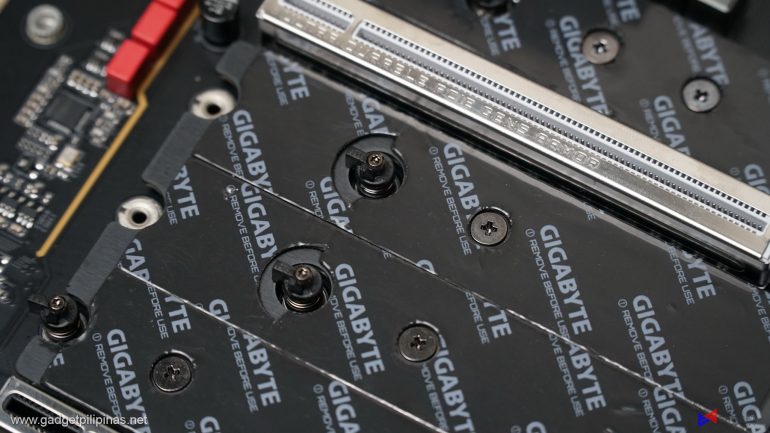
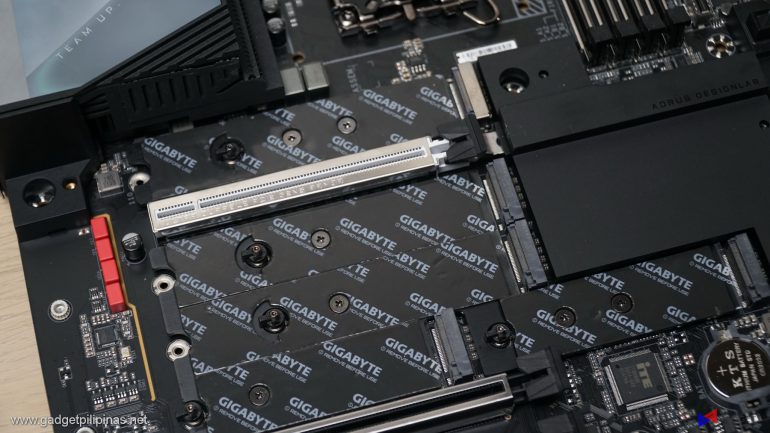
The M.2 ports are also fitted with Gigabyte’s EZ-Latch Plus feature for toolless SSD installation. Props to Gigabyte for implementing these small, but very impactful quality of life improvements.
Benchmark Setup and Methodology
Gadget Pilipinas’ testing philosophy is to provide detail-oriented results as accurately as possible so that our readers can replicate our tests given that these conditions are met. Different benchmarking apps and sequences are used depending on the component or device being tested
| CPU | Intel Core i9 13900K |
| COOLER | ASUS ROG RYUJIN II 360mm V2 – Noctua NT-H2 Thermal Paste |
| MOTHERBOARD | Gigabyte Z790 Aorus Master | Gigabyte Z790 Aero G | ASUS ROG Strix Z790-E |
| MEMORY | Kingston Fury Beast RGB 32GB(2x16GB) 6000 MHz DDR5 |
| GPU | Nvidia RTX 4090 FE 526.72 driver |
| STORAGE | Kingston KC3000 1TB PCI-E Gen 4 SSD |
| POWERSUPPLY | FSP Hydro GT Pro 1000W GOLD PSU |
| OPERATING SYSTEM | Windows 11 Pro Build 22H2 |
| DISPLAY | Lenovo Legion Y27Q Gaming Monitor |
We use CapFrameX 1.7.0 Beta as our primary FPS capture and analysis tool for all our gaming benchmarks. The latest build version of Windows 11 Pro, and WHQL-certified drivers are used for our benchmarks. Readings such as temperatures and power draw are recorded using HWINFO64, and other relevant software for cross-checking.
Gigabyte Z790 Aorus Master Synthetic Benchmarks
SuperPI 32M
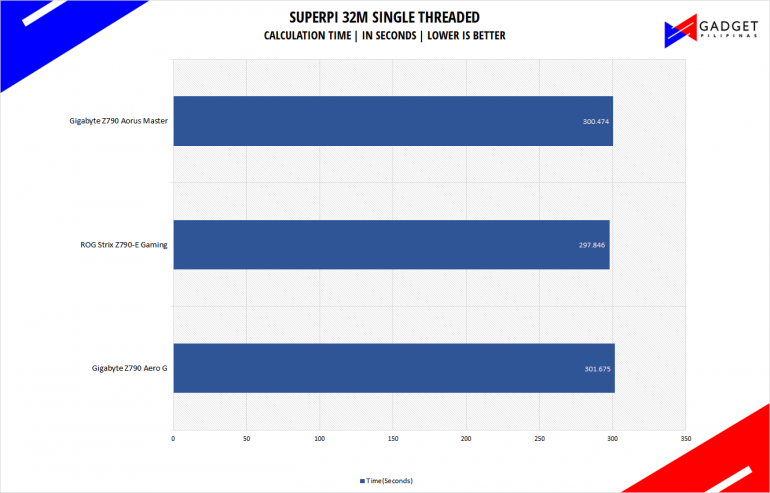
SuperPI is a single-threaded benchmark application that lets the CPU calculate Pi(π) to the nth digit. In this benchmark, we selected the Pi calculation to 32M, the highest available in the software
wPrime 1024M
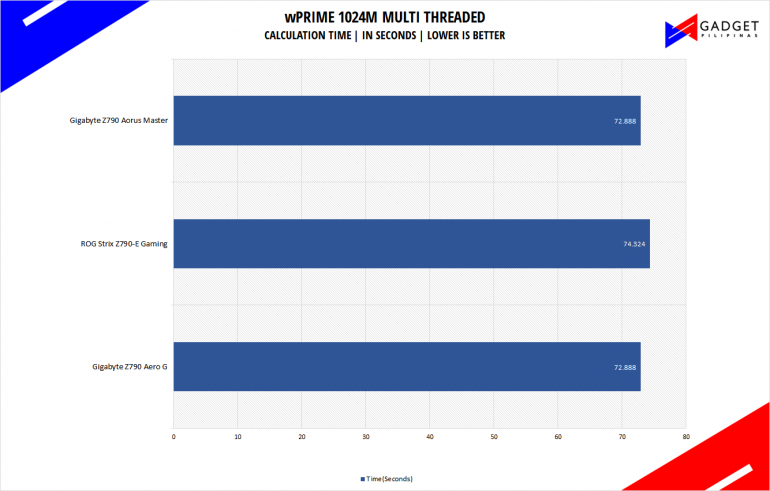
wPrime is a benchmark tool similar to SuperPI, but the former takes on finding prime numbers using Newton’s Method. The benchmark is set to calculate 1024 million prime numbers, and the performance is measured according to calculation time.
AIDA64 Memory Benchmark
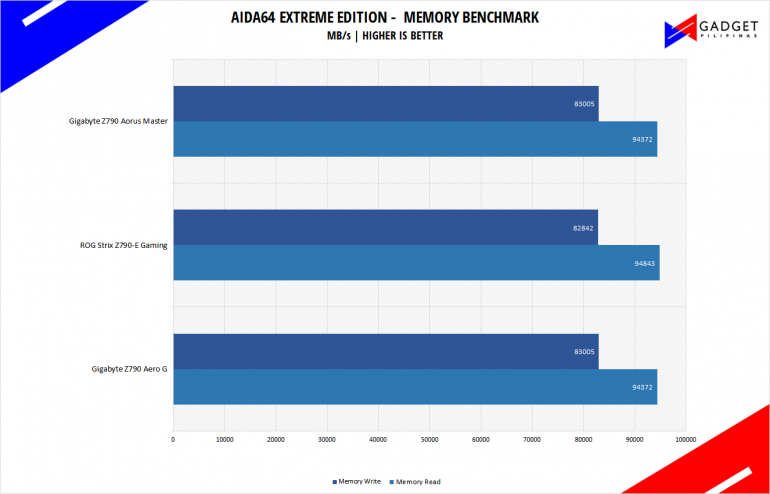
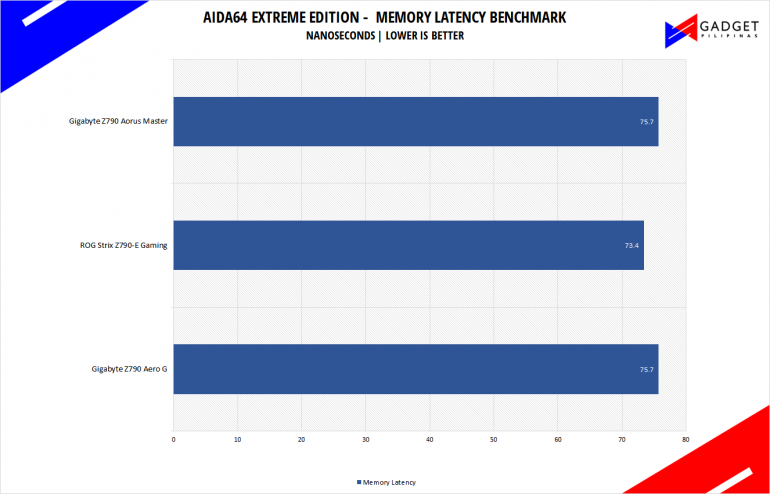
AIDA64 is a very popular and powerful monitoring tool, as well as a benchmarking application. AIDA64 is commonly used to stress test CPUs, especially testing if an overclock is stable. We used AIDA64’s Memory Benchmark to measure the data transfer bandwidth of the system memory.
GeekBench 5.4.5
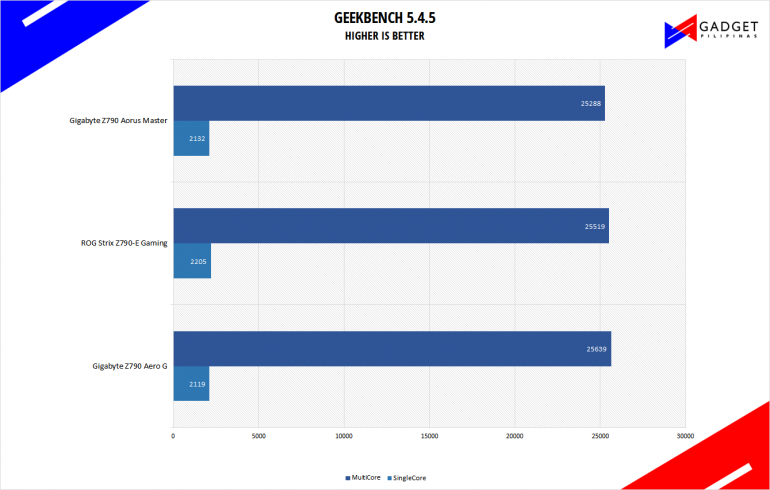
Geekbench is a multi-platform benchmark used to gauge CPU performance and compare them across Windows, Mac, and Mobile. Geekbench 5 is the latest version and doesn’t rely on memory than the previous Geekbench 4, making it a great tool to measure both single-core and multi-core CPU performance.
CINEBENCH R20 & R23
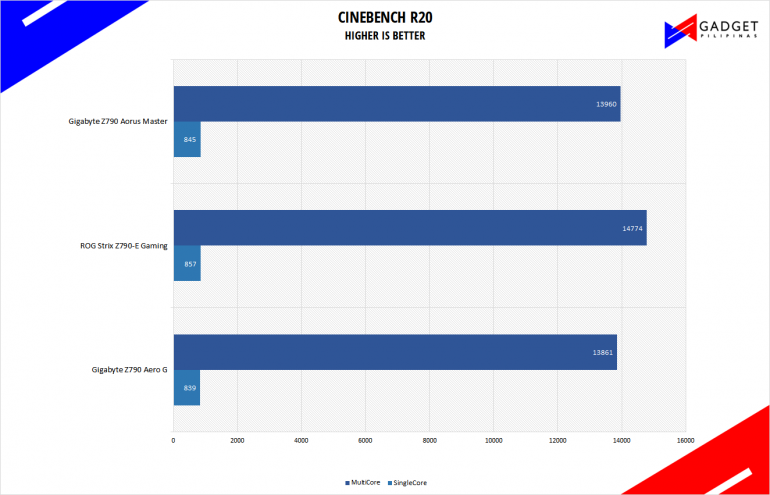
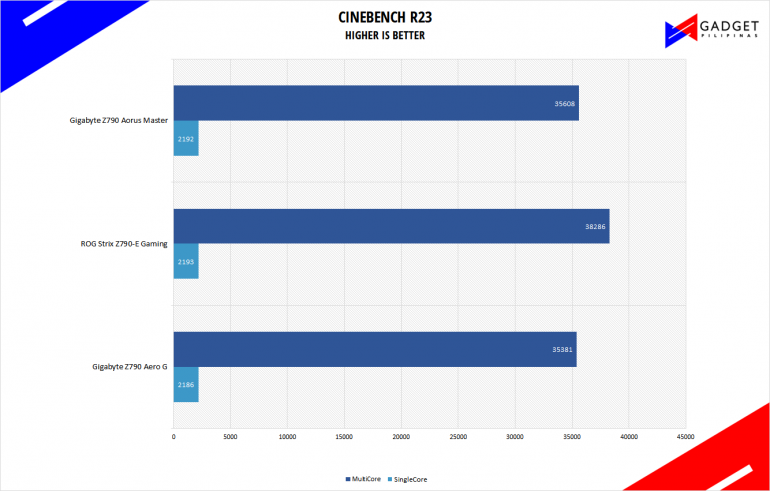
Maxon’s Cinebench benchmark is one of the most iconic benchmark applications used by reviewers and enthusiasts. The latest Cinebench R20 uses the latest rendering architectures, including Intel’s Embree ray tracing technology and other advanced features from AMD and Intel that allow users to render the same scene on the same hard. Cinebench R20 uses a larger and more complex testing scene than Cinebench R20 by about 8x computational power and requires 4x the memory.
PCMark10
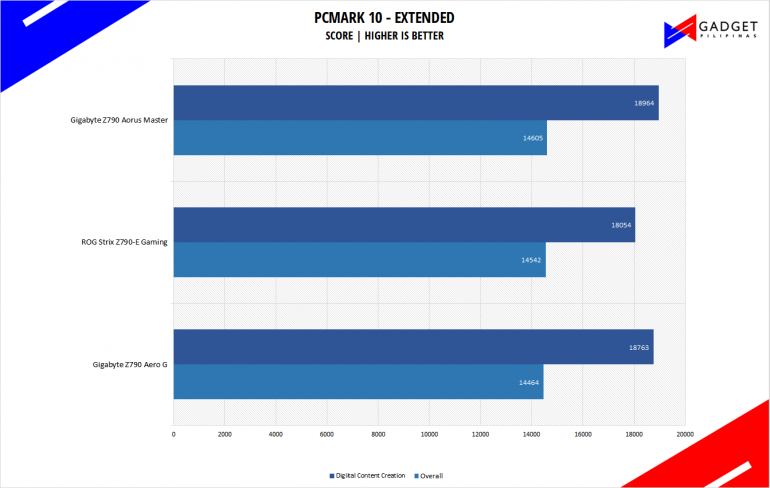
From the same developers of the popular game benchmarking tool 3DMark, PCMark 10 is a benchmarking app for measuring a whole PC’s performance. It covers a wide variety of tests to reflect common tasks performed in a modern workplace. We selected PCMark 10’s extended benchmark and reported both the overall score and Digital Content Creation Score.
RealBench 2.56
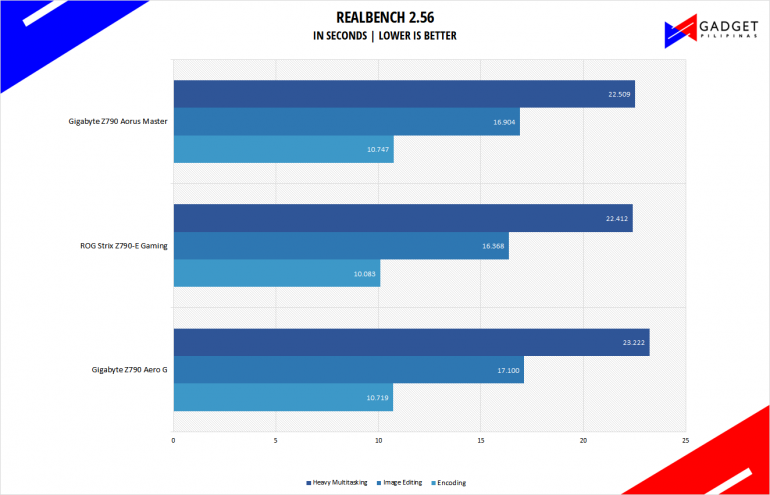
Realbench, developed by ASUS, is a benchmark application that uses real, open-source applications to test your PC’s performance as it would perform in real life. There are three tests available with each test using different parts of the PC’s subsystem so that all areas are covered. Instead of using the individual and total scores, we choose to display the completion time in seconds for a more measurable metric.
V-RAY 4.10 & 5
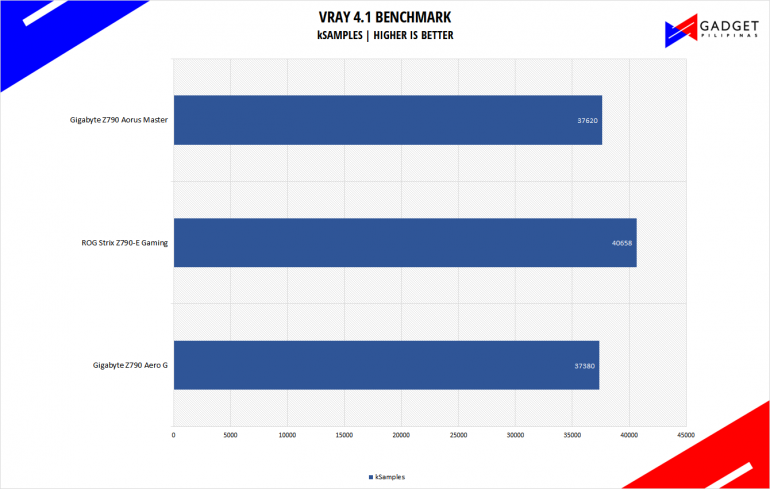
V-Ray Benchmark is a stand-alone version of V-Ray developed by Chaos Group. It is designed to test the CPU and GPU by rendering sample scenes at a fixed amount of time. V-Ray is a plug-in mostly utilized by 3D computer graphics software applications mainly for industrial design, product design, architecture, film, and video game production. V-Ray is not limited to 64 threads as it supports multi and mega-threading.
BLENDER
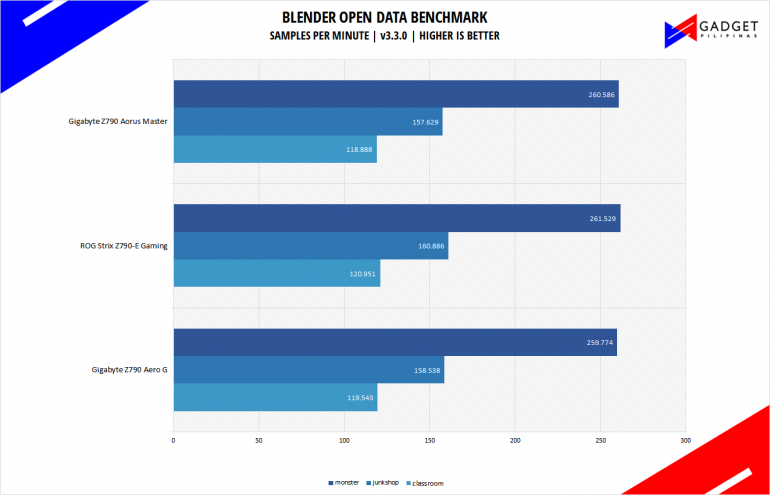
Blender is a widely used, free, open-source 3D creation suite. It supports the whole 3D pipeline process from modeling, rigging, animation, simulation, rendering, and even motion tracking. Blender has become a standard for CPU benchmarks with the BMW27 and Classroom scene most used. This prompted the company to release Blender Open Data Benchmark in 2018, a benchmark-specific version that allows users to run a preset benchmark and share the results online similar to 3D Mark.
CORONA RENDERER

Corona Renderer is an unbiased photorealistic render available for Autodesk 3Ds Max, Maxon Cinema 4D, and as a stand-alone application. Its popularity, like Blender, led Chaos Group to develop a benchmark version of the app which runs using Corona Renderer 1.3. Workstation systems, especially CPUs, can utilize Corona Benchmark as up to 72 threads can be used in the benchmark, making it very suitable for CPUs with various price segments.
HANDBRAKE
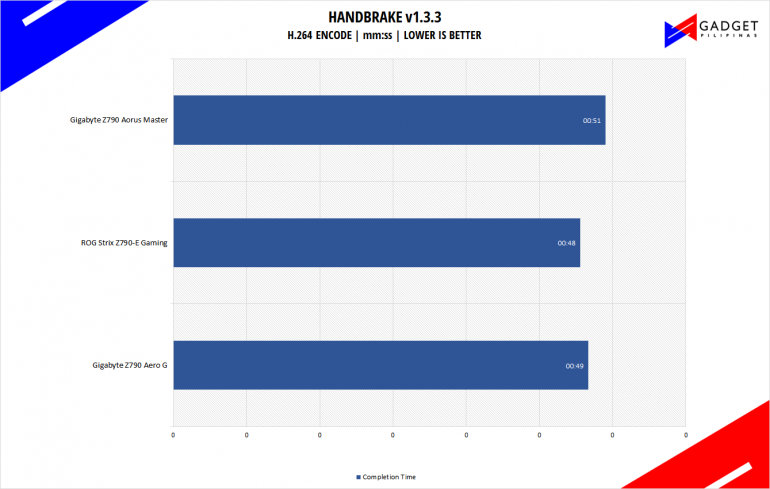
Handbrake is a top-rated open-source video conversion software that is used by professionals, enthusiasts, and even reviewers as a reference point mainly because of its wide variety of media codecs. The rise of streaming and blogging makes video content, both encoding, and transcoding important for these people, regardless of whether they’re seasoned professionals or just starting out. Handbrake also takes advantage of AVX-512 and OpenCL to accelerate certain types of media codecs. Our Handbrake benchmark converts a 500MB MP4 video to H.264 to measure the processor’s performance.
3DMARK
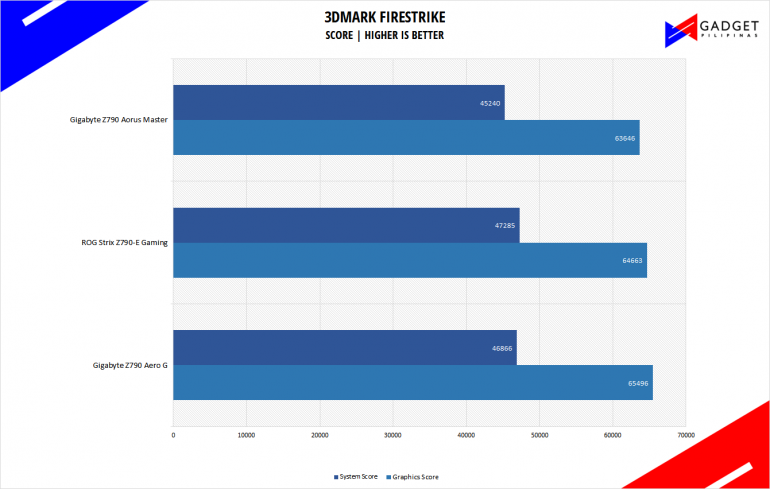
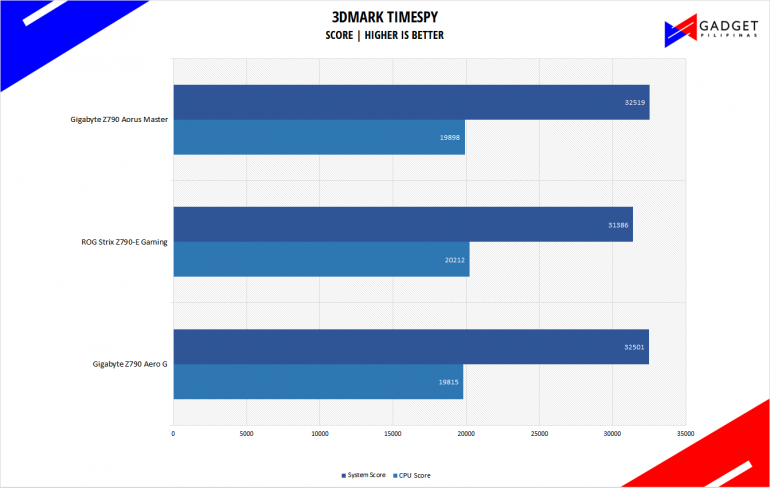
3DMark is the go-to benchmark for gamers because of the ability to share and compare results online. We tested the Intel Core i9 12900K both in Fire Strike and Time Spy to get a good gauge of DX 11 and DX 12 API performance.
UL PROCYON VIDEO EDITING
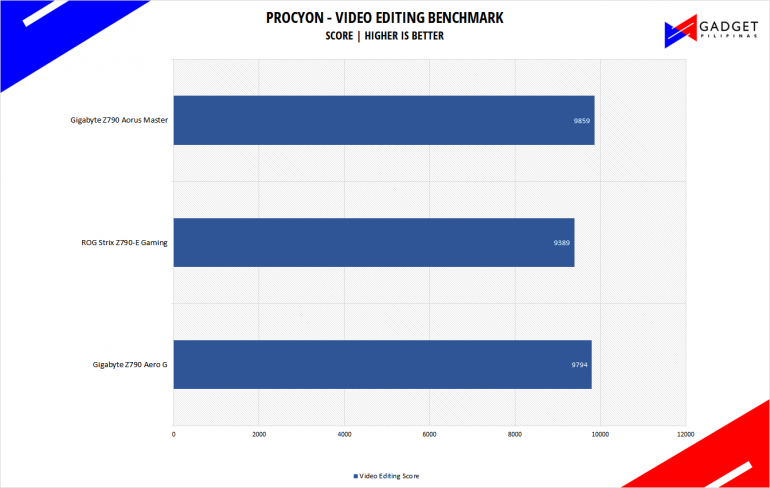
Procyon benchmark suite is developed by the UL, the same team behind 3DMark and PCMark benchmarks. The UL Procycon video editing benchmark uses Adobe Premiere in a typical video editing workflow. The benchmark starts by importing two video project files with various edits, adjustments, and effects – the second project uses several GPU-accelerated effects. Each project is exported in 1080p with H.264 encoding and again in 4K with HEVC H.265. The reported score is based on the time taken to export all four videos.
GOOGLE OCTANE 2.0

Google Octane 2.0 is a benchmark that measures a Javascript engine’s performance by running multiple tests representing different use cases of JavaScript applications. While Google Octane is retired and no longer maintained, it is still a good representation of today’s dynamic, interactive web applications. Our Google Octane 2.0 is run on Microsoft’s latest Chromium-based Edge browser.
Gigabyte Z790 Aorus Master UEFI BIOS
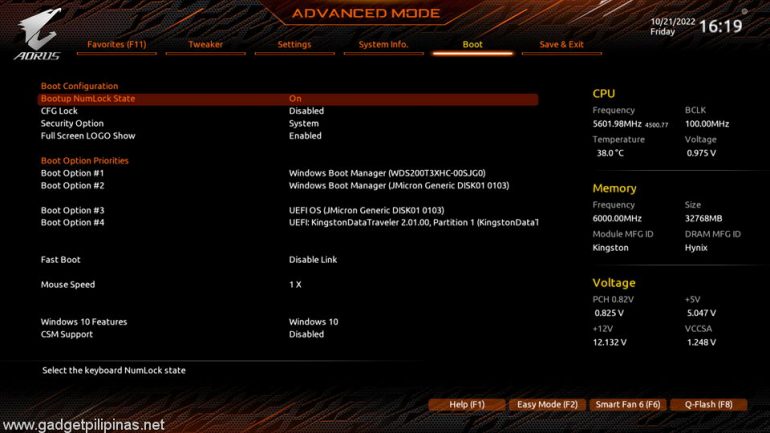
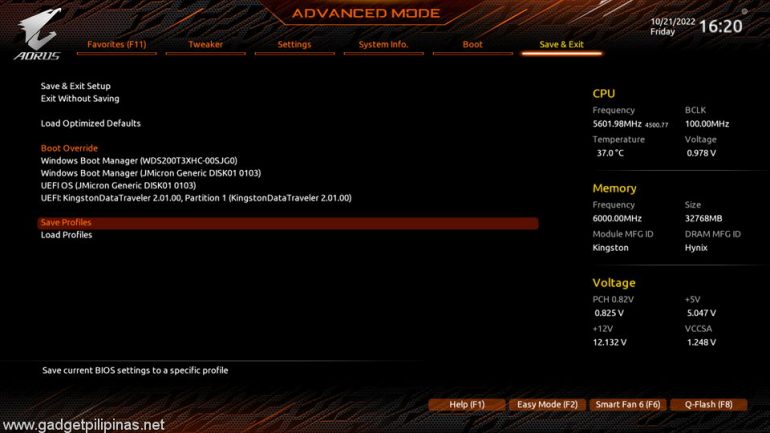
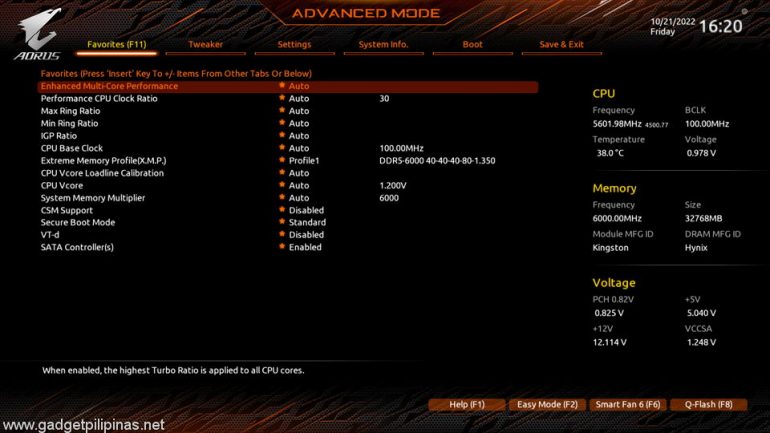
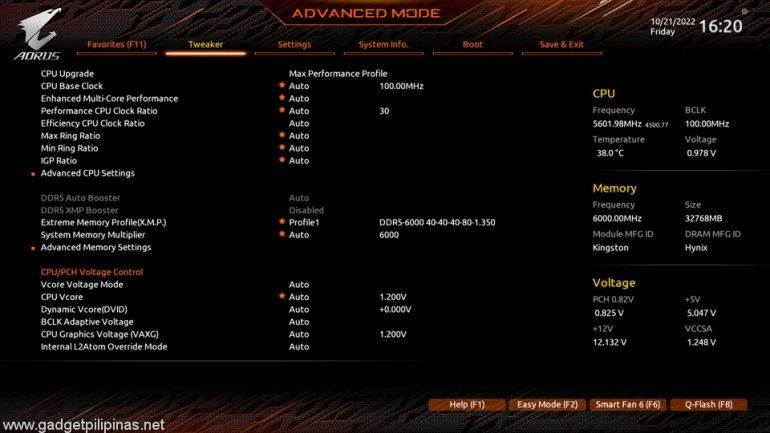
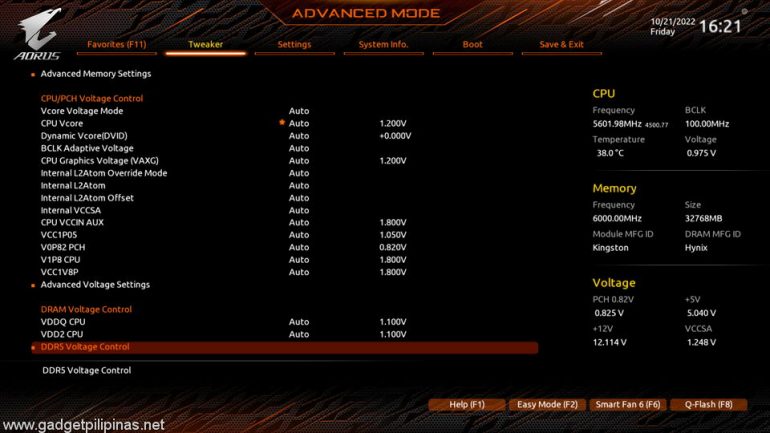
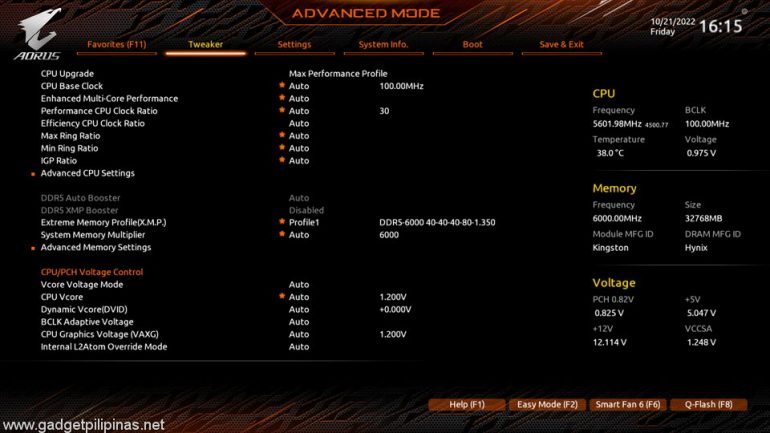
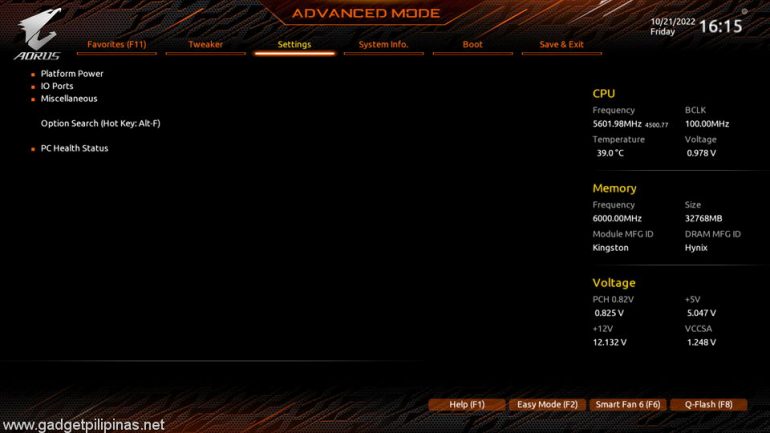
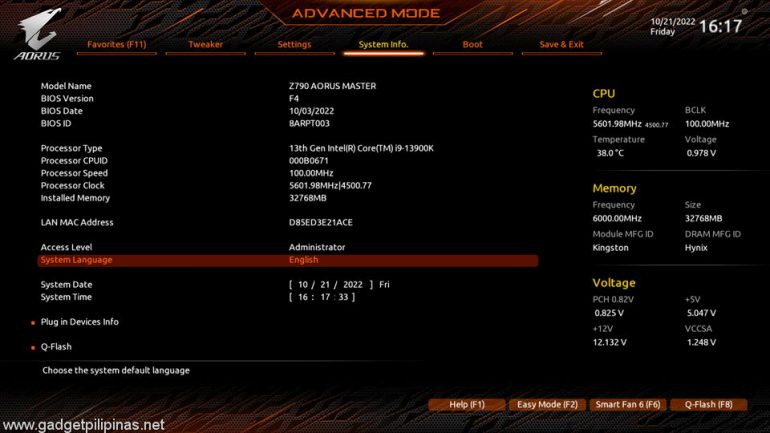
Gigabyte retained the same UEFI BIOS found on its Aorus motherboards. Navigating through the BIOS shouldn’t be a problem especially if you’ve used Gigabyte or Aorus motherboard before. You’ll likely spend most of your time under the tweaker tab as it contains settings relevant to XMP and CPU overclocking.
Gigabyte Z790 Aorus Master Temps and Power Draw
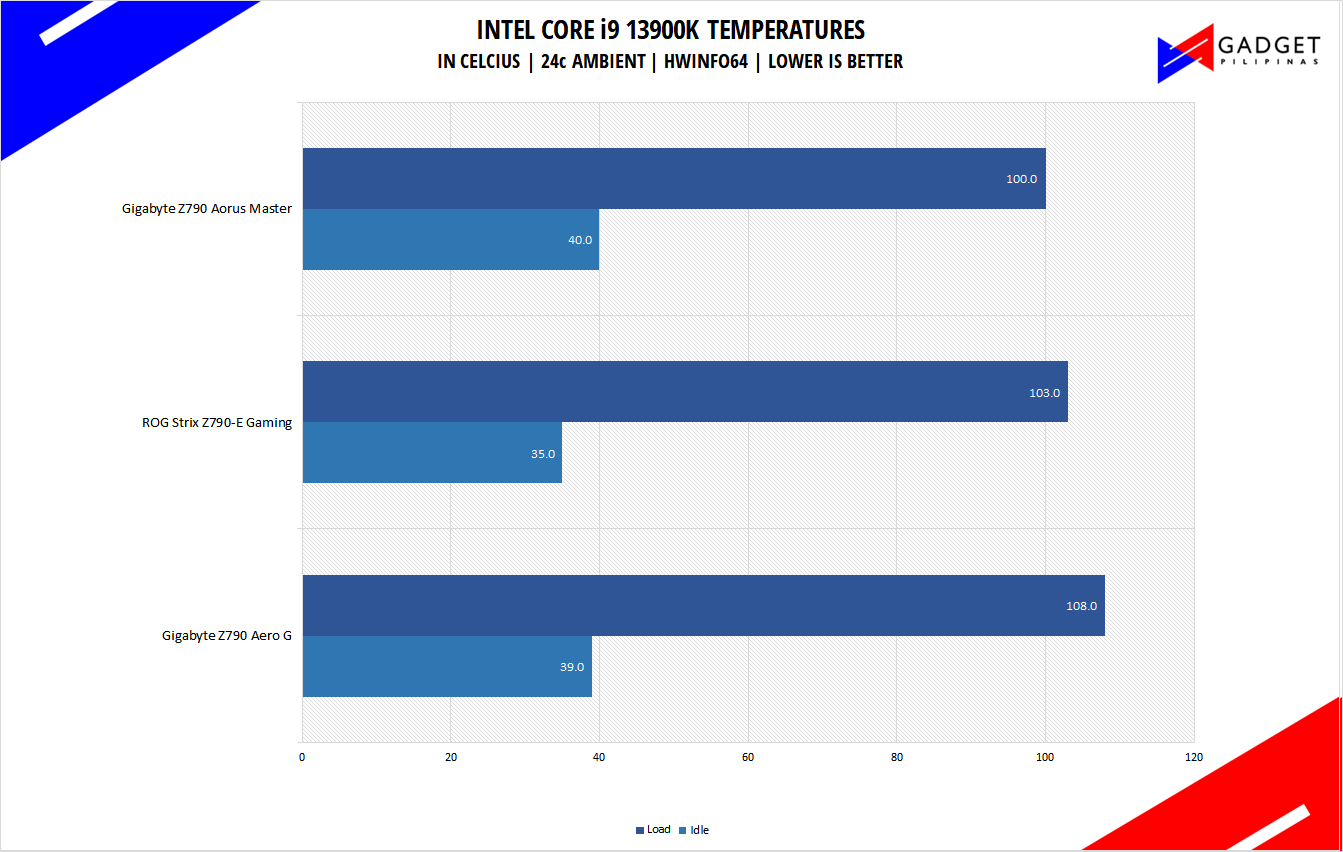
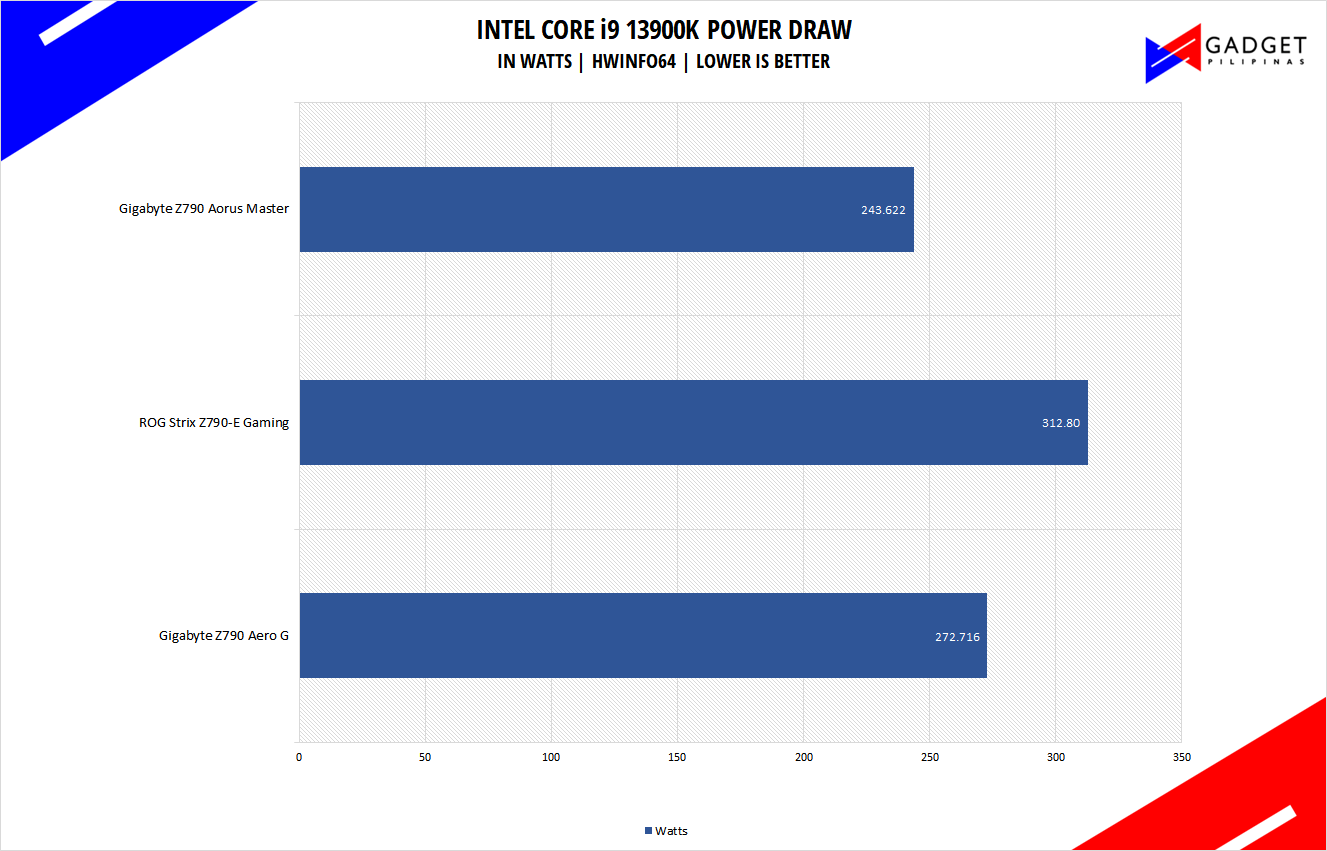
Our Intel Core i9 13900K had the lowest temperature when paired with the Gigabyte Z790 Aorus Master indicating the board’s excellent frequency-voltage control as it also has the lowest power draw at 243.622W.
Conclusion
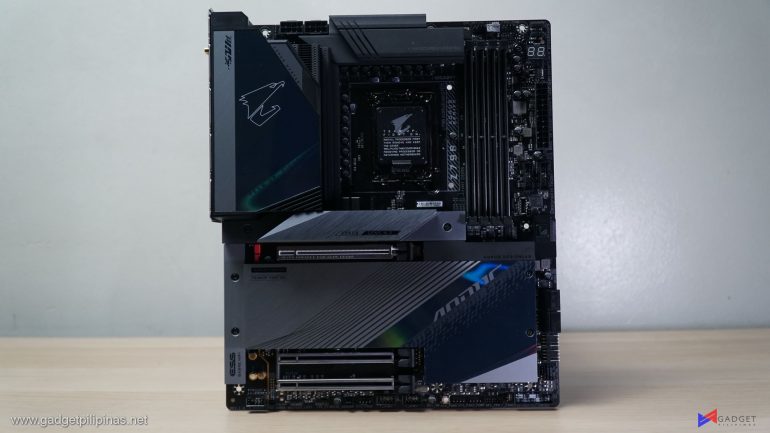
The Gigabyte Z790 Aorus Master provides exactly what most enthusiasts and consumers desire, a performance-centric motherboard with superb build quality and robust connectivity. Priced at Php 37,800, the Z790 Aorus Master is definitely on the premium side of the Z790 Motherboard spectrum alongside the like of MSI’s MEG and ASUS’ ROG lineup. That said, competitor motherboards that could match the Aorus Master’s connectivity are priced more than the Z790 Mater making it technically the “value” Z790 board in terms of IO. While IO is its bread and butter, the Z790 Aorus Master also performs decently when paired with the Intel Core i9 13900K given our benchmark data and recorded temps and power draw.
Overall, despite its steep pricing like most premium flagship motherboards, the Gigabyte Z790 Aorus Master brings value to where it matters the most, connectivity, build quality, and performance. Unlike most premium motherboards, the Z790 Aorus Master doesn’t have unnecessary gimmicks and add-ons that only a few could enjoy. Instead, it doubles down on features that users are using on a daily basis such as USB ports and M.2 SSD slots – all without compromising on build quality and performance. So, if you’re looking for a Z790 motherboard that doesn’t charge a premium for features that most would consider gimmicks, then the Gigabyte Z790 Aorus Master should be on the top of your list.
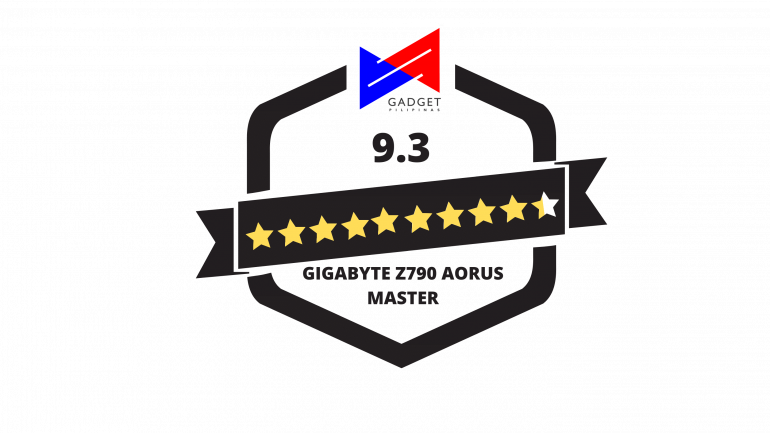
Grant is a Financial Management graduate from UST. His passion for gadgets and tech crossed him over in the industry where he could apply his knowledge as an enthusiast and in-depth analytic skills as a Finance Major. His passion allows him to earn at the same time help Gadget Pilipinas' readers in making smart, value-based decisions and purchases with his reviews and guides.

